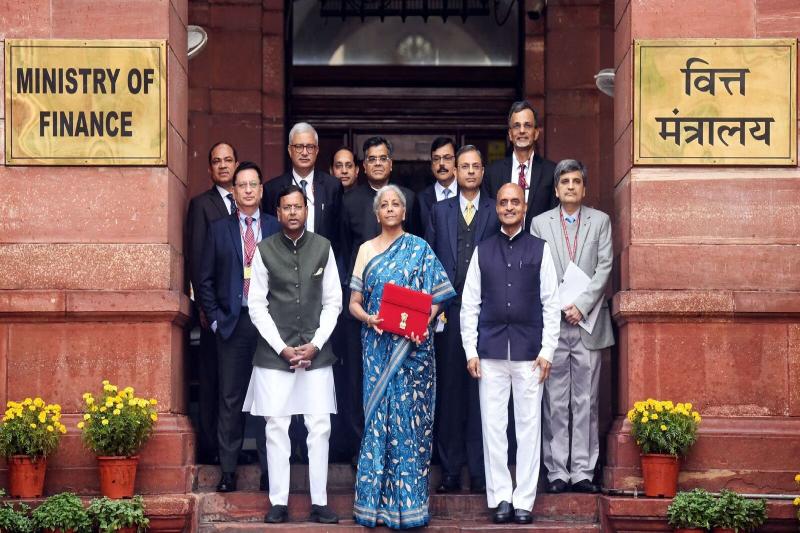Before this year’s legislative elections, the Narendra Modi administration released its final interim budget, bragging about its economic achievements and promising to spend a record amount on airports, trains, and other infrastructure.
New Delhi will spend Rs11.11tn ($134bn) in the upcoming fiscal year, an increase of almost 11%, according to Finance Minister Nirmala Sitharaman’s budget address. She claimed that this would “have a large multiplier impact on growth and investment.”
“Efforts made by the government since 2014 have guaranteed a better quality of life and a life of dignity for all citizens,” Sitharaman stated, adding that during Modi’s ten years in office, per capita income has more than quadrupled and the Indian economy has risen from being the world’s tenth to the fifth largest.
India is a “bright star,” according to Sitharaman, with a projected 7% economic growth this year. “This is the first budget in amrit kaal,” the speaker continued, using the Sanskrit term for “time of nectar”—a term Modi has coined to characterize a time he claims offers the most populous nation in the world “unprecedented opportunities.”
In a lower house election that is anticipated to take place in April or May, Modi’s Hindu nationalist Bharatiya Janata party is predicted to win a third five-year term in office.
Direct social transfers, like as a program that offers free food grains to over 800 million people—a pandemic-era initiative that has been extended for five years—help explain why Modi is still well-liked among India’s impoverished.
A complete budget is anticipated to replace the interim 2024–25 spending law, which did not contain any significant additional handouts, once the new administration assumes office.
“The good thing is they didn’t announce any great populist schemes,” said Shumita Deveshwar, chief India economist with GlobalData TSLombard. “They feel the economy is doing quite well and are focusing on capex spend, which hopefully will have a positive impact on the broader economy.”
According to Sitharaman, New Delhi would keep streamlining its finances and cut its budget deficit from 5.8% of GDP in the current fiscal year to 5.1% in the upcoming one. By 2025–2026, she predicted, it would have decreased even more to less than 4.5% of GDP.
did not alter the tax rates in any way. According to Madan Sabnavis, chief economist at Bank of Baroda, “it’s a fairly neutral budget which tries to do the most given the constraints of electoral prudence and fiscal prudence.””By reducing other expenses, the higher capital expenditure allocation has been managed.”
This week, the Department of Economic Affairs under the Modi administration published a positive assessment of the Indian economy, referring to the prime minister’s tenure as a “decade of transformative growth.”As India commemorates 100 years since gaining independence from the UK in 2047, Modi has pledged to transform the country into a sophisticated economy.
According to Deveshwar, “it seems they are quite confident they will be coming back for a third term.”


